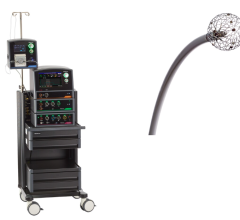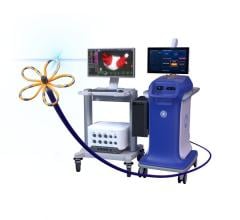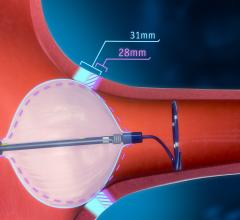July 13, 2011 – Many children and teens suffering from tachycardia, or rapid heart rate, have relied on medication to regulate their heart rhythms and control symptoms such as fatigue, dizziness and fainting spells. However, doctors at the Akron Children's Hospital Arrhythmia Center have made great strides in curing tachycardia with minimally invasive procedures.
Their skills will be on display during a one-hour webcast that will be available beginning Thursday, July 14, at 6 p.m. (Eastern). The webcast will include footage from a cryoablation procedure, as well as interviews with Arrhythmia Center director John Clark, M.D., associate director Grace Smith, M.D., and the patient and family.
During the cryoablation procedure, electrode catheters – long, slender, flexible wires – are threaded into the heart to map or locate the precise area of the heart causing the irregular rhythm. Once identified, the surgeon destroys the abnormal heart tissue by freezing it off with nitrous oxide. In other cases, radiofrequency ablation is used to burn the affected area.
Clark and Smith recommend cryoablations as the primary therapy for children age 5 and older with rapid heart rates. Approved by the U.S. Food and Drugs Administration (FDA) in 2003, Akron Children's was the first pediatric hospital in Ohio to offer cryoablation, which cures 90 to 95 percent of patients.
Clark and Smith perform most cardiac ablations without radiation, an advancement significant to young patients at risk of lifelong cumulative radiation exposure through regular diagnostic procedures.
For more information: www.akronchildrens.org


 April 24, 2025
April 24, 2025 








